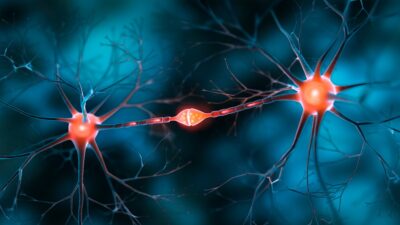The First Rejuvenation Therapy Reaches Human Trials

Today we are pleased to announce that UNITY Biotechnology is going into human clinical trials with the first true rejuvenation therapy that directly targets one of the processes of aging: senescent cells.
The quiet revolution
In our collective imagination, revolutions start with a bang; however, more often than not, real-life technological revolutions start quietly and unbeknownst to most people. This is pretty much what’s going on with the therapies that aim to prevent or reverse age-related diseases by targeting the aging processes directly.
The very first human trial designed to test senolytic drugs was announced less than a week ago, with most of the world probably completely oblivious to it and what its success might represent for the future of medicine. We’re talking about UNITY Biotechnology’s announcement that its candidate senolytic drug UBX0101 is now being tested in human patients who suffer from osteoarthritis.
Senolytics crash course
Senolytics are a class of drugs that could potentially address cellular senescence, which is one of the hallmarks of aging [1]. In simple terms, a cell becomes senescent when it loses its ability to divide. This happens as a response to DNA damage, and it is thus a sort of safety measure to prevent the proliferation of cells containing potentially harmful mutations, such as cancerous ones. This response may be triggered by telomere exhaustion as the cell hits the maximum number of divisions it can undergo—the so-called Hayflick limit—or by other external stressors, such as oxidative stress.
Cellular senescence helps prevent cancer, and senescent cells have been shown to have beneficial effects, such as helping wound healing; however, the accumulation of senescent cells over time appears to be harmful. Senescent cells secrete a cocktail of harmful chemicals known as the senescence-associated secretory phenotype (SASP), which has been associated with a number of age-related diseases; the SASP promotes tissue inflammation and induces senescence in nearby healthy cells, inducing a sort of chain reaction.
While senescent cells are normally cleared up by the immune system, increasing numbers of them escape destruction over time as a consequence of immunosenescence—the age-related decline of the immune system’s ability to perform its job. This, in turn, results in a build-up of senescent cells and a higher incidence of morbidity with age.
For several years, it has been proposed that the selective elimination of senescent cells might ameliorate, and potentially halt and reverse, some age-related conditions; several biotech startups and companies have developed different kinds of senolytic drugs that target senescent cells while leaving healthy cells unharmed. Results in mouse models of different age-related conditions have been very positive, but the only way to know whether senolytics would be beneficial to humans is to run a human clinical trial [2-4].
UNITY Biotechnology and the UBX0101 trial
UNITY Biotechnology was founded in 2011 by Founded by Drs. Jan van Deursen, Judith Campisi, Nathaniel David, and Daohong Zhou. UNITY’s focus is primarily on senescent cell clearance, but the company also works on mitochondrial dysfunction and loss of circulating youth factors. Its pipeline includes several drugs currently in the lead optimization phase, with UBX0101 having just entered Phase 1 of a randomized, double-blind, placebo-controlled, FDA-approved clinical trial.
UBX0101 is currently being tested for safety in patients suffering from mild to severe osteoarthritis, an age-related condition that affects joints and results from the breakdown of cartilage and bone. This condition may cause joint swelling, decreased mobility, joint pain, and stiffness, affecting everyday life. Cellular senescence has been linked to osteoarthritis, which may affect several different joints, but currently, UNITY’s trial is focusing on osteoarthritis of the knee. While this trial is designed mainly to assess the safety and tolerability of a single joint injection, efficacy will be monitored as well.
What’s next?
It’s early to say if and how well senolytics will work in humans, but regardless, this trial can be considered an important milestone on the way to a world free from age-related diseases. Even though this trial is focused on a specific condition, UNITY’s approach attacks a root cause of aging, attempting to reverse the disease or, at the very least, slow it down; currently, osteoarthritis can only be managed, like the vast majority of age-related conditions.
If this trial were to prove successful, we can imagine how it may foster more resources being spent on this kind of research in order to further refine the approach and possibly extend it to treat other conditions; other companies may follow UNITY’s lead and join the race to improve upon a technology already proven to work; more generally, a successful senolytic trial would provide proof of the concept that human aging is amenable to medical intervention not only in theory but also in practice. This might prove to be a fatal blow inflicted to the pro-aging trance, which leads so many people to believe that aging can’t and shouldn’t be interfered with.
UNITY also has a second drug candidate, UBX1967, an inhibitor of specific members of the Bcl-2 family of apoptosis regulatory proteins, which is slated for an IND application and a Phase 1 clinical study for an ophthalmological indication in the second half of 2019.
Conclusion
This is the first true rejuvenation therapy to reach clinical trials in humans that follows the repair approach to aging as advocated by Dr. Aubrey de Grey of the SENS Research Foundation. The removal of these problem cells has long been suggested as a way to combat age-related ill health, and, finally, we have reached the point at which over a decade of research is ready to be put to the test.
Should the trial not succeed, it will still likely provide us with invaluable data to deepen our understanding of aging and allow us to try again. Either way, it’s going to be a win-win. We’re happy to be able to update our Rejuvenation Roadmap to include UNITY’s endeavor, and we wish UNITY the best of luck! We can hardly wait to see the results.
Literature
[1] López-Otín, C., Blasco, M. A., Partridge, L., Serrano, M., & Kroemer, G. (2013). The hallmarks of aging. Cell, 153(6), 1194-1217.
[2] Baker, D. J., Wijshake, T., Tchkonia, T., LeBrasseur, N. K., Childs, B. G., Van De Sluis, B., … & van Deursen, J. M. (2011). Clearance of p16Ink4a-positive senescent cells delays ageing-associated disorders. Nature, 479(7372), 232-236. [3] Zhu, Y., Tchkonia, T., Pirtskhalava, T., Gower, A. C., Ding, H., Giorgadze, N., … & O’Hara, S. P. (2015). The Achilles’ heel of senescent cells: from transcriptome to senolytic drugs. Aging cell, 14(4), 644-658. [4] Roos, C. M., Zhang, B., Palmer, A. K., Ogrodnik, M. B., Pirtskhalava, T., Thalji, N. M., … & Zhu, Y. (2016). Chronic senolytic treatment alleviates established vasomotor dysfunction in aged or atherosclerotic mice. Aging cell.








